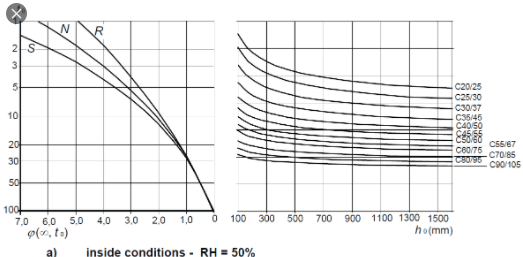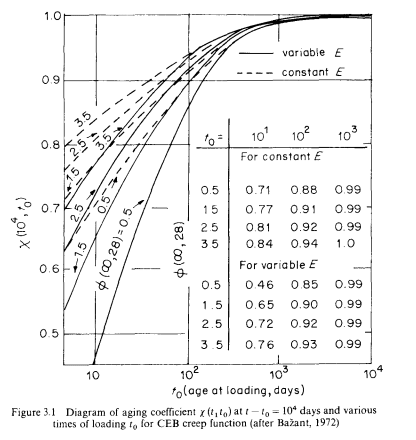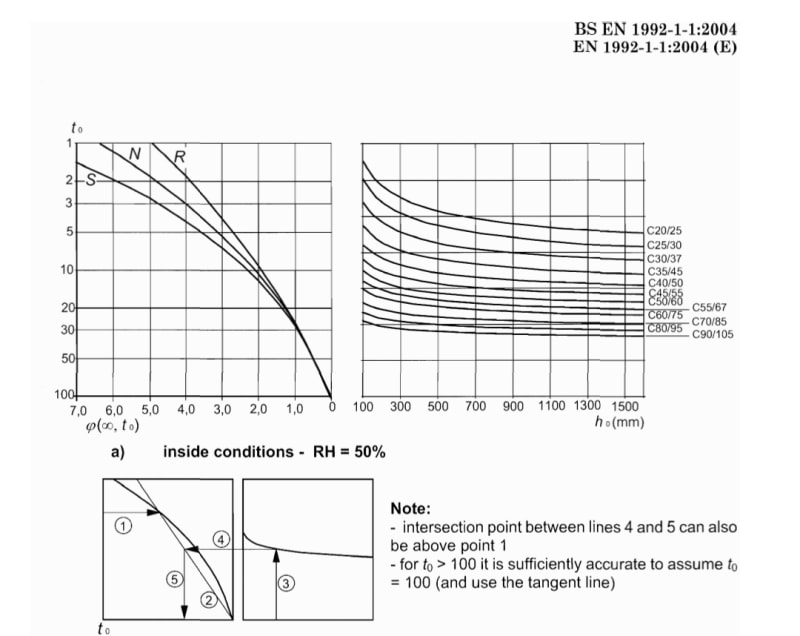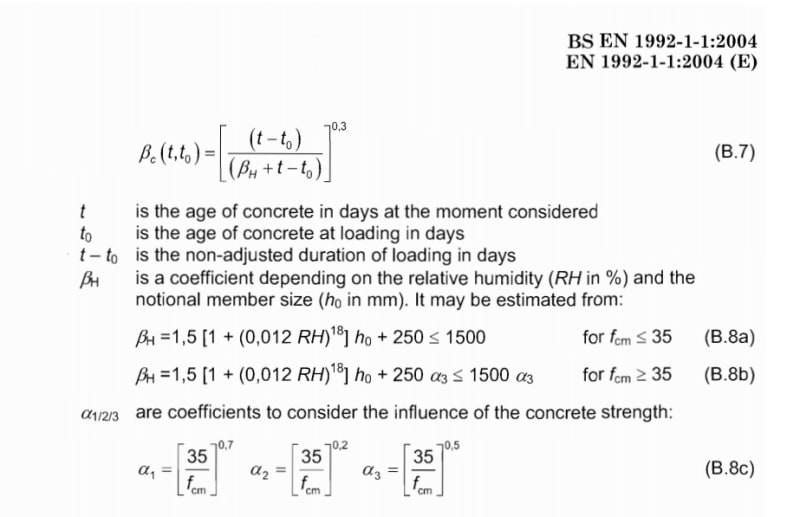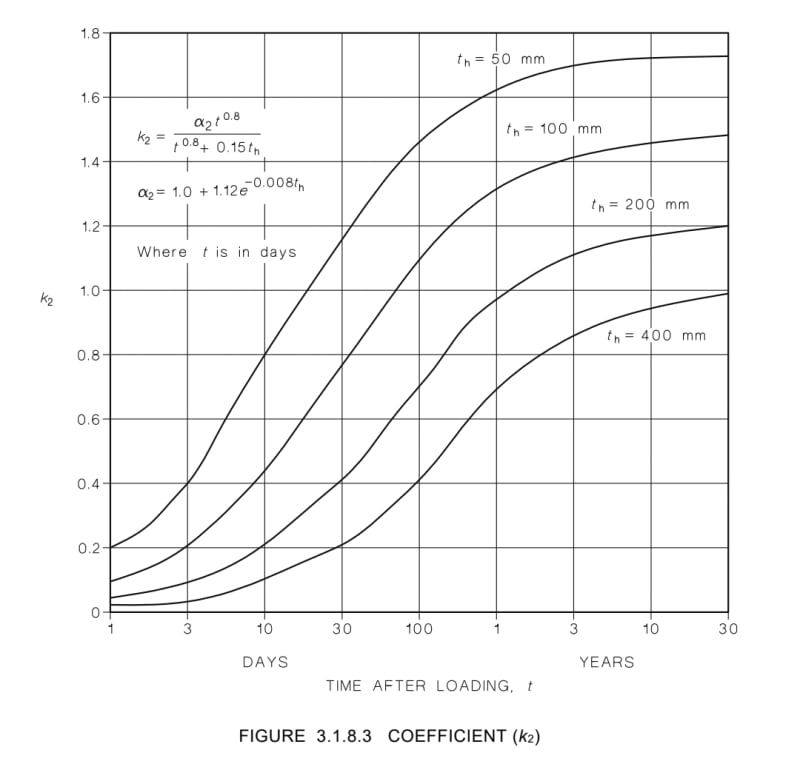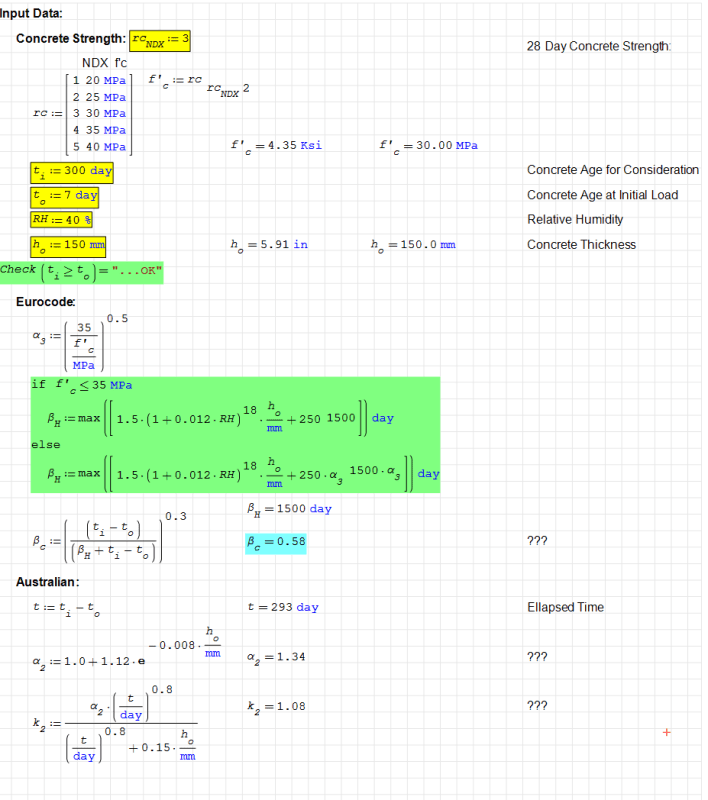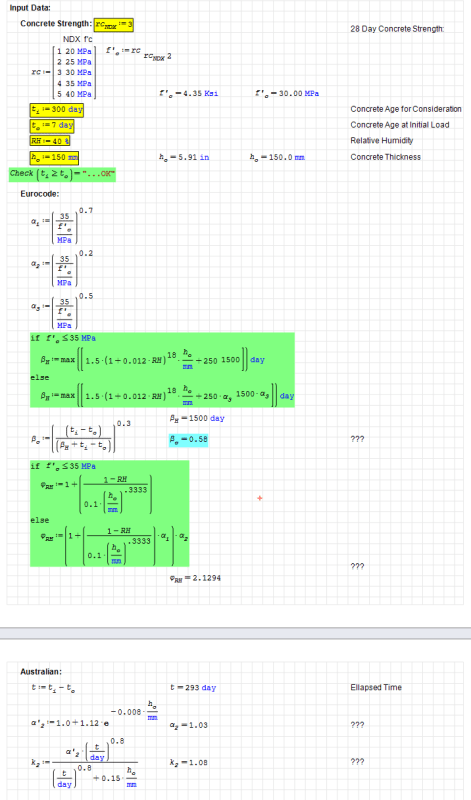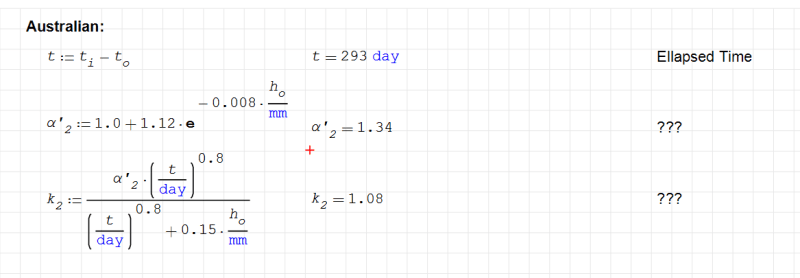I came across 2 creep coefficient diagram. First one is from Eurocode, second one is from elsewhere. I think the second one make sense, As the time progress, the creep coefficient shall increase, hence, the effetive modulus of concrete shall decrese. Can someone explain it ? I am confused.
